The Character of Cricket Read online
Page 13
Everyone now knows that there is some sort of running crisis in Yorkshire cricket and that it presently centres on the person of Geoffrey Boycott. The precise nature of this controversy is as elusive as the precise nature of the Schleswig-Holstein affair – and about as interesting for the non-aligned. All one can say for certain is that it has a debilitating effect on the cricket. The 1984 annual report recorded, without comment: ‘Special General Meeting. This took place at the Conference Centre, Harrogate, on the 21st January 1984, when resolutions were carried of No Confidence in both the Cricket sub-committee and the General Committee, and urging a further one-year playing contract to be offered to Geoffrey Boycott. This in turn involved the resignation of the Committee, and at the resulting district elections there were many new members elected.’ That sort of Special General Meeting is routine stuff these days.
I had been to Old Trafford for the first half of the Roses’ duel, so it seemed appropriate to visit Headingley for the second. Contrary to my normal practice I drove to Headingley, combining business with a family holiday in the Yorkshire Dales. That night we stayed in a pub in north Notts which had the world’s second most uncomfortable bed, a regular supply of heavy lorries passing within inches of the bedroom window and a late closing juke box immediately below. That, coupled with a long bewildered loop round the Leeds ring road before a crawl through the town centre, put me in a less enthusiastic mood than I would have liked.
You should take the Otley road (pronounced Otla with a sharp accent on the last syllable), continue until the Headingley War Memorial which is between two pubs, one of which sells Tetley’s, the other Whitbread ‘Yorkshire Brewed Ales’.
I parked in Ash Gardens, walked down Derwentwater Grove and into Headingley View. Later on I saw some villas with names, but here I was struck by the lack of pretension. A true Yorkshire characteristic, I suppose, a reflection of the Yorkshireman’s devotion to plain speaking and calling spades bloody shovels. These houses, numbered not named, and almost painfully plain, were making a statement all right. The statement was ‘A house is a house is a house’. Opposite the Headingley turnstiles there were two shops. Mr Saffer, the pharmacist, had no protection on his glass window; Mr Luharia had metal mesh grills all over his general stores. I judged this not just to be because he had a licence to sell wines and spirits, whereas the pharmacist traded in little more exciting than sponges, but because he appeared to be of Asian origin. Maybe I was being cynical.
There was some dispute next day over the size of the crowd. The Observer said 5,000, the Sunday Times 4,000 and the Sunday Telegraph ‘fewer than 2,000’. I have always been dubious about crowd estimates. All I can say is that there was an agreeable if not exactly hectic sense of bustle and anticipation about the place. People were heading towards the ground with quick tread and lunch bag, looking eager. As we calculated our admission at the turnstiles a friendly middle-aged man with a haversack strapped to his back swept my elder son off through the members’ entrance with a cheery ‘I’ll take the lad in’, which saved us a few bob. Like most county matches (though not always cup-ties) this one was reasonably priced, but six admissions are never cheap. The member’s gesture was appreciated.
While on the subject of finance, I couldn’t help noticing that Yorkshire charge 25p for their scorecards. For the corresponding fixture at Old Trafford I was charged l0p. Notts and Worcester charge ten, too; Leicester fifteen. It is true that the Yorkshire card is better printed than most and on better card; but it is – like others – subsidised by advertisements from the likes of Yorkshire Microcomputers, Austin Steel of Dewsbury, and Cleanaway Waste Services of Ravensthorpe. A small point, I suppose, but I did feel I wasn’t getting value for money.
I had hoped to see Boycott on his home turf, but it was not to be. The Master had tweaked a hamstring – or something like that. Old age seems to have made him very cautious, but I retain a sneaking admiration for him if only because I was at Lord’s that magical day when he made his great century in the final of the Gillette Cup. No one who was there can ever think of him as boring, but then I know people who used to say the same of poor Ken Barrington and I never believed them.
I was sorry not to see him ambling about on the boundary, chewing gun with that introspective, quizzical grin. He hit three sixes and fifteen fours on that magical September day at Lord’s in 1965. He and Brian Close carted Surrey all over the ground. Illingworth and Trueman did the bowling damage. Illingworth had five and Fred got Edrich, Smith and Barrington in a single over. That was the last Yorkshire team I think I came close to worshipping.
Not only, I read in the morning’s paper, was Boycott missing but Sidebottom too. And Lancashire were without Graham Fowler, Clive Lloyd (attending Forbes Burnham’s funeral in Guyana) and Jack Simmons. Indeed Lancashire had only four capped players in the team and Yorkshire’s star bowler, Shaw, was a twenty-two-year-old electrician from the Coal Board.
Lancashire were batting, the sophisticated electronic scoreboard told us. No wickets down. To someone who had only ever seen Headingley on television the place was a considerable shock. On TV you see little other than close-ups of the play which include only occasional glimpses of the advertising boards and a blur of the front row spectators in the background. Apart from the scoreboard, all you see of the ground is the odd shot of the pavilion when people leave and enter the playing arena.
The Headingley pavilion is a remarkably dull do.
Technically it is only half a pavilion. It is not a place for Yorkshire members but houses the players and Joe Lister, the county secretary, who inhabits the ground floor. Mr Lister played for the county briefly in 1954, the year he joined Worcester as assistant secretary. He scored thirty-five runs for Yorkshire, averaging just under nine. Yet another example of a modest player turning his hand to some other aspect of the game and becoming a power in the cricketing land. He has been secretary at Yorkshire since 1971. His office is perfectly all right, but the building is dull and small. On television, however, it is practically all one sees, which had led me to suppose that the Headingley ground was newish, smallish and undistinguished.
Not so at all. In real life Headingley, which claims a capacity of 20,000, feels enormous and far more ancient than modern. Entering by the turnstile near the ‘Winter Shed’, I was immediately aware of a great bank of uncovered wooden seating to my right, a huge football stand presenting its backside to me and what appeared to be a beached aircraft carrier. The wicket seems miles away, partly because an ancient cycle track rings the perimeter between most of the seats and the field of play.
Norman Yardley, who was after all captain of Yorkshire from 1948 to 1955 and might be expected to feel some loyalty to the place, wrote that ‘the amenities for spectators cannot be ranked very high. Refreshment arrangements are decidedly utilitarian.’ Now as then the main ordinary spectators’ bar and refreshment area is in the ‘Winter Shed’. This is no misnomer. In winter it serves as the indoor cricket school. In summer it is a cavernous canteen serving bitter and singularly unimaginative old-fashioned pies and butties. One thing struck me as very odd. Although Yorkshire has rightly famous beers from such breweries as Theakston’s, John Smith and Goose Eye, at the ground they seemed only to be selling Younger’s ‘Scotch bitter’.
The ground looks better if you move round to the rugby stand end and go to the top of the terracing. From there the backdrop is a line of poplars, planted, it is sometimes alleged, to block the view from the gardens of the houses beyond. A number of trees were looking rather dead and one spectator even suggested the householders might have been sabotaging them with weedkiller. Behind them on the hill is St Mary’s Church with a tall, if grimey, spire. Below it, invisible even from the high terracing, is the Oak Fisheries, where to judge from the lunchtime queue a number of spectators reckon you can get a better meal than in the Winter Shed.
Although there is no mistaking that the big grandstand was designed for the benefit of those watching the rugby on the other side, the
re are seats facing the cricket and even some concessions to the glorious cricketing past. There is a Len Hutton bar. In the ‘aircraft carrier’, which turns out to be the old pavilion in disguise, there are photographs, though once again rugby league seems to get more space than cricket. And the cricket is not all Yorkshire by any means. I was surprised to find one of the match played at Lord’s between the smokers and the non-smokers of England and Australia in 1884. It feels more like a snug winter hideout than an airy cricket-watching place. Anyone seeing Headingley for the first time and being told that this was the headquarters of the most famous and successful of all the English cricketing counties could be forgiven for being somewhat sceptical.
The reason for this was explained, at least in part, by Joe Lister. It transpires that Yorkshire, in one vital respect, are way back where Leicester and Essex were after the last war. They are homeless vagabonds. ‘Yorkshire,’ he told me, ‘does not own a blade of grass or a plank of wood.’ They play throughout the old county, paying no attention to ‘reforms’ which have placed part of Yorkshire in Humberside. ‘Headingley,’ he says, ‘is owned by the Leeds Cricket, Football and Athletic Company. And effectively that means the rugby league club.’ What that means, effectively, is that Yorkshire are not truly masters in their own house.
Not that there haven’t been improvements. The sophisticated electronic scoreboard, which was probably before its time and was initially accident-prone, has now been reprogrammed by Professor Jim Briggs of Sheffield University and seems to have overcome its teething troubles. There are executive boxes above the Winter Shed and a ‘White Rose Executive Club’.
But the over-riding impression is one of conservatism. The club stands alone in refusing to play other than Yorkshire-born players. They still produce an annual hardbound yearbook in the same way they always have – other counties have changed to paperback. And despite the squabbling they are well served by officials who sometimes seem to go on forever. In over a hundred and twenty years they have had only nine presidents, eight treasurers and five secretaries.
Great deeds have been done at Headingley, most notably in that extraordinary 1981 match between England and Australia when Botham made one of his extraordinary centuries. Somerset once scored 630 here; Verity took ten for 32 against Warwickshire; the Australians were bowled out by Yorkshire for 23 in 1902; though in 1933 the county made only 33 all out against Lancashire. Sutcliffe and Leyland both made two double-centuries on this ground.
Nothing like that happened when I was there. One observer of the ’85 Yorkshire team remarked that they looked like a school first XI. That day against Lancashire they were missing all three of their capped seam bowlers and only Bairstow, the skipper behind the stumps, exuded maturity. There seemed to be a lot of chat coming from the field of play and I assume most of it was coming from Bairstow. He is a good player to watch – combative and chirpy – but I felt he needed a few more supportive old pros to help him along.
The Coal Board electrician looked sharp enough. But Lancashire took the honours and young Fairbrother made his second Roses century of the summer. The sun shone too. I just wish that Yorkshire could start to win things again and that a Yorkshireman or two could win a regular England place. No England team seems complete without one. And they must do summat about beer in Winter Shed.
The Racecourse Ground, Derby
I was prejudiced in favour of the county ground at Derby long before I saw it. Everywhere on the county circuit men shook their heads and grumbled when you mentioned Derby. It was ugly. It was uncomfortable. Nothing had been spent on it for years. It was a disgrace to the game. Several people told me that the Derby and England fast bowler, Mike Hendrick, had left the club because of the shocking state of the players’ lavatories. Now Chesterfield, ah, yes, Chesterfield, that was a cricket ground. One of the most beautiful grounds in England. Dozens of old cricketing bores waxed lyrical about the crooked spire of the Chesterfield church to such an extent that I became perverse. I was not going to even look at Chesterfield, but I was going to Derby and I was determined to like it.
I thought my instincts were right when I paused at the entrance and one of the gatemen, an elderly man of the kind you learn to recognise once you have passed through more than a dozen county ground turnstiles, gazed through the drizzle at the dank green turf and the dilapidated old grandstand and said, ‘That used to be the finest straight mile in England.’
When, at the office, I asked if anyone knew where I would find the secretary, Roger Pearman, I was told that the ‘chief executive’ would probably be upstairs in the pavilion. Elsewhere on the circuit Mr Pearman would be called the secretary or, just conceivably, the secretary-manager. Since Derby is probably the least fashionable and grand of all the seventeen first-class counties, it is entirely predictable that they call Mr Pearman their ‘chief executive’. They are compensating.
Fearful rows erupted under Mr Pearman in the autumn of 1983. They led to a Special General Meeting chaired by no less a personage than the President of the Club, His Grace the Duke of Devonshire. The Annual Report had a wonderfully succinct account of the proceedings. That September some committee members walked out of a meeting after a Mr Osborne made a ‘concerted attack’ on the chief executive. When His Grace invited questions and comments from the floor, Mr Osborne said they did not want Mr Pearman to continue as chief executive. A chief executive, it seemed, should behave like one and stay behind his desk in his office. Mr Pearman was much too inclined to mingle with the players and the punters, exchanging pleasantries and buying his round.
It all sounds quite as ugly and divided as anything that goes on north of the border in the land of the White Rose. However, when I arrived it was plain that Mr Pearman was still in charge, and very much at ease both with his committee and with the players.
It was not, however, his continued tenure of office, nor the fact that he was in the top of the pavilion which pleased me. When I introduced myself he was with a rather grizzled, smallish chap who had that unmistakable combination of tweed, authority and reduced but middle-class circumstance which defines the schoolmaster. This turned out to be the former headmaster of Pocklington School, York, one Guy Willatt, ex-captain of the county and now a leading committee member. Mr Willatt immediately endeared himself to me by saying that he had recently read a novel of mine. What’s more he had enjoyed it. There is nothing a writer likes more than that rare bird, the appreciative reader. So at this point I became firmly convinced that I was going to like Derby.
I am not sure whether I could find the ground again. Maybe it was because I got there early and did not take the direct route. Derby is a railway town, of course. I passed that Great White Elephant, the Advanced Passenger Train, as my own train drew into the station, which is itself in the process of being refurbished. Outside the entrance there is a hugely grand war memorial to ‘the brave men of the Midland Railway’ who gave their lives Everywhere around the station are dull red-brick railway cottages and buildings and decaying workshops. For anyone who regrets the passing of the railway era Derby is a sad place of pilgrimage.
The cathedral was naturally the reason for not proceeding directly to the ground. It is not one of the great cathedrals, in fact it is not really a cathedral at all, but the Parish Church of All Saints, designated a cathedral in the C. of E.’s 1927 boundary reform, which created the diocese of Derby from parts of Lichfield to the west and Southwell to the east. The fine medieval tower is, however, clearly visible from the ground; and the president of the club’s most redoubtable ancestress, Bess of Hardwick, is entombed within. The church itself is mainly eighteenth-century because one of the vicars, Dr Hutchinson, had the medieval one knocked down and engaged the architect James Gibbs to build a new church. The official guide says, ‘The classical design makes no concessions to the exuberant gothic of the tower, but they live harmoniously together.’ This is the sort of remark I should like to hear said aloud by a guide from the Aesthetic Tendency.
By the ti
me I had cased the cathedral the early promise had turned to wet, so I hurried into a tea shop above a pub where the proprietor was saying to the other two customers: ‘Good morning ladies, horrible morning!’ I lingered over a pot of tea and a toasted tea-cake (50p), but even so the drizzle was still descending. Mr Pearman told me later that Derby was a football town, even when County were in the third division, so it wasn’t surprising that people’s directions to the cricket were confused. It turned out to be on the wrong side of a dual carriageway swirling with traffic. Not a long walk, but not a nice one either.
I would have known at once that it was an old racecourse even if the gateman had not told me it was the best straight mile in England. The old stand topped with a venerable verdegris cupola is still there. So is the starter’s box, and the jockeys’ changing-rooms. But, contrary to popular opinion elsewhere, there is now a modern pavilion with long room, bar, executive suites and a balcony. It is not, to my eye, the world’s most beautiful building, and like almost all modern cricket pavilions it lacks the style of the Victorians and Edwardians. It cries out for some wrought iron work, for a mad clock tower or a batty belfry. But still it is there with all mod cons and a plaque which says, ‘The Foundation Stone was laid on the 23rd January 1982 by the Mayor of Derby, Councillor Flo Tunnicliffe.’
Elsewhere it must be admitted there is still some dilapidation and decay, and at least one area is cordoned off with a sign saying, ‘This stand must not be used today.’ But Derby’s long overdue facelift does seem to have begun.

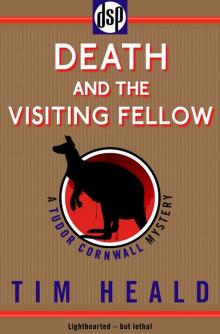 Death and the Visiting Fellow
Death and the Visiting Fellow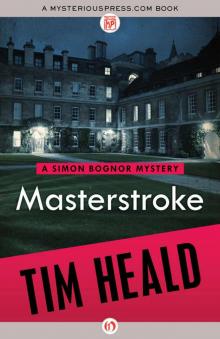 Masterstroke (The Simon Bognor Mysteries)
Masterstroke (The Simon Bognor Mysteries) Deadline (The Simon Bognor Mysteries)
Deadline (The Simon Bognor Mysteries)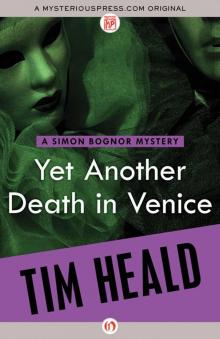 Yet Another Death in Venice (The Simon Bognor Mysteries)
Yet Another Death in Venice (The Simon Bognor Mysteries) Just Desserts (The Simon Bognor Mysteries)
Just Desserts (The Simon Bognor Mysteries)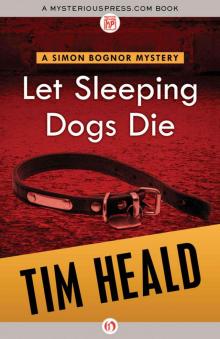 Let Sleeping Dogs Die (The Simon Bognor Mysteries)
Let Sleeping Dogs Die (The Simon Bognor Mysteries)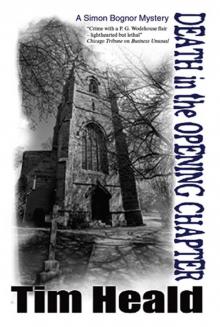 Death in the Opening Chapter
Death in the Opening Chapter Blue Blood Will Out (The Simon Bognor Mysteries)
Blue Blood Will Out (The Simon Bognor Mysteries)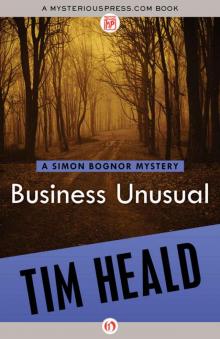 Business Unusual (The Simon Bognor Mysteries)
Business Unusual (The Simon Bognor Mysteries)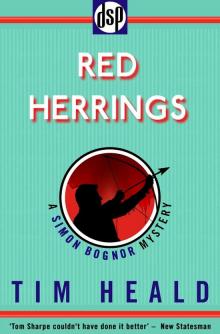 Red Herrings
Red Herrings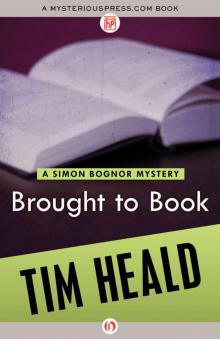 Brought to Book (The Simon Bognor Mysteries)
Brought to Book (The Simon Bognor Mysteries)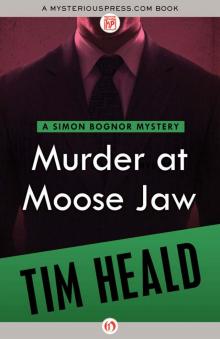 Murder at Moose Jaw (The Simon Bognor Mysteries)
Murder at Moose Jaw (The Simon Bognor Mysteries)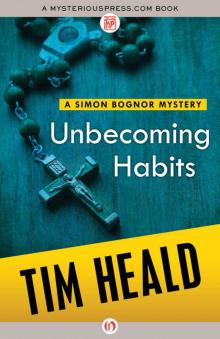 Unbecoming Habits (The Simon Bognor Mysteries Book 1)
Unbecoming Habits (The Simon Bognor Mysteries Book 1)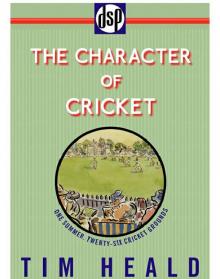 The Character of Cricket
The Character of Cricket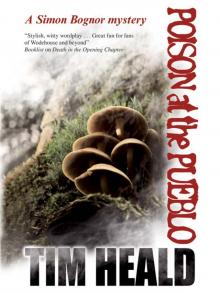 Poison At The Pueblo
Poison At The Pueblo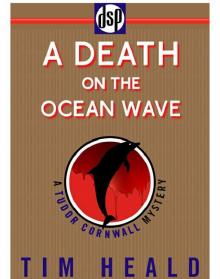 A Death on the Ocean Wave
A Death on the Ocean Wave